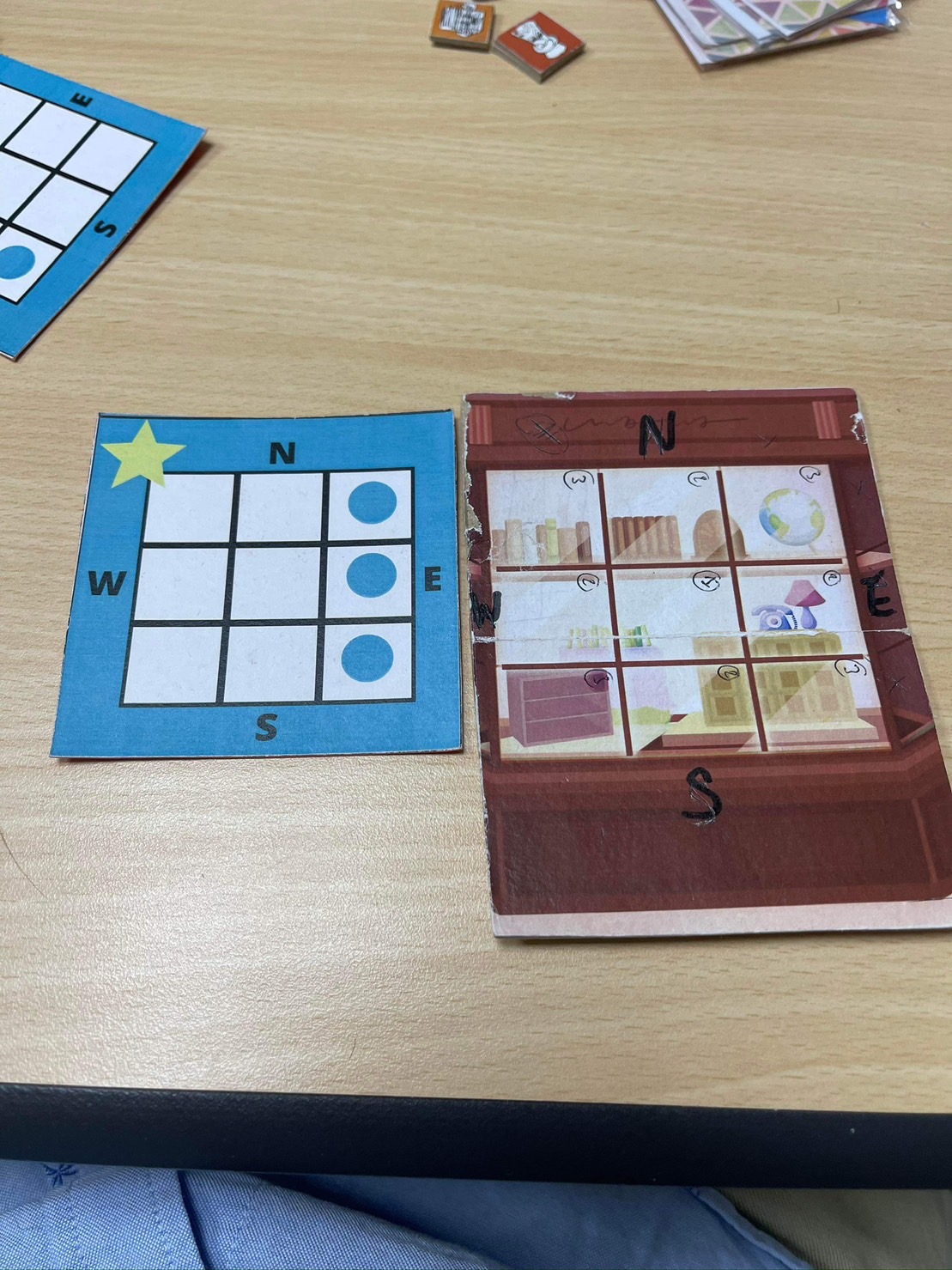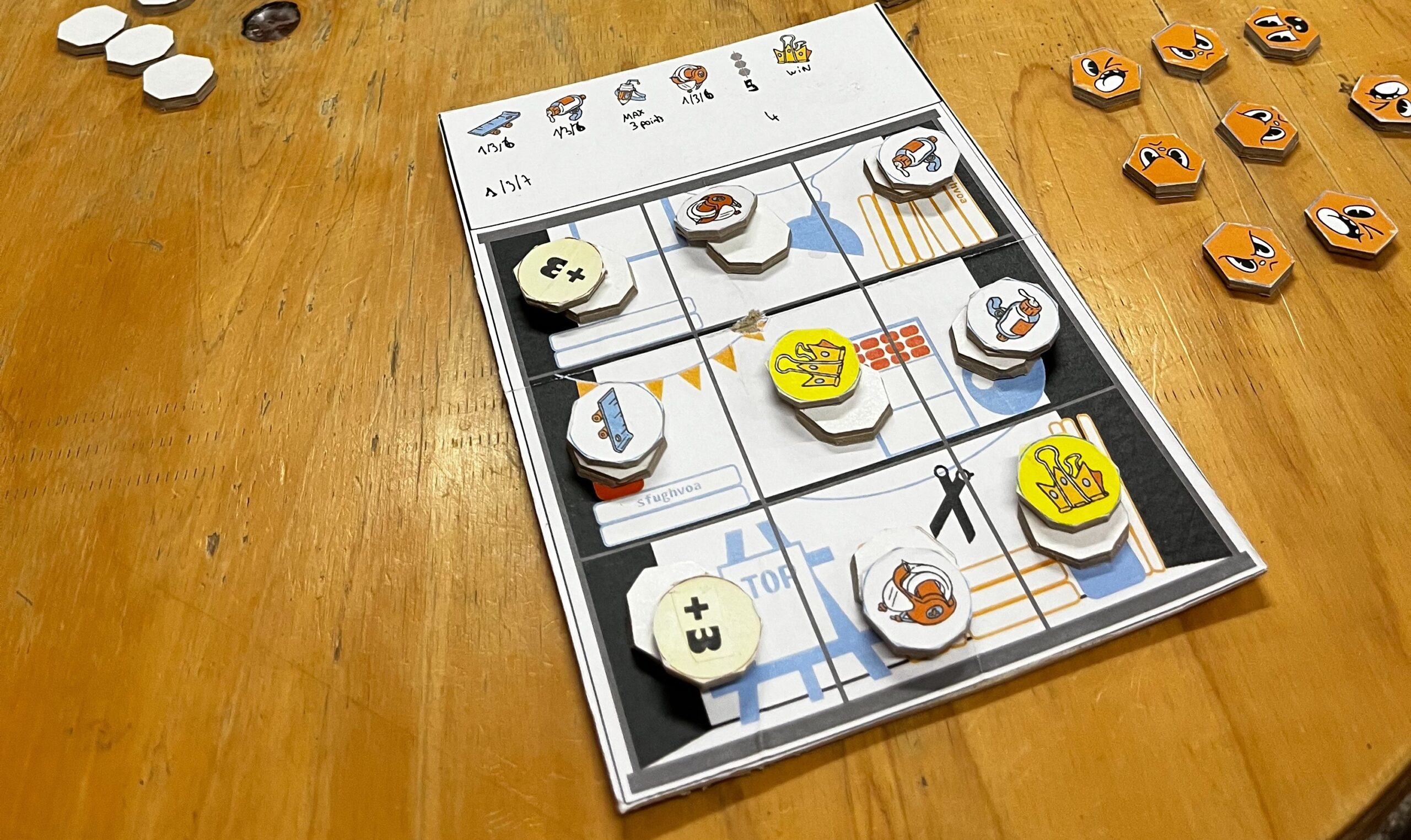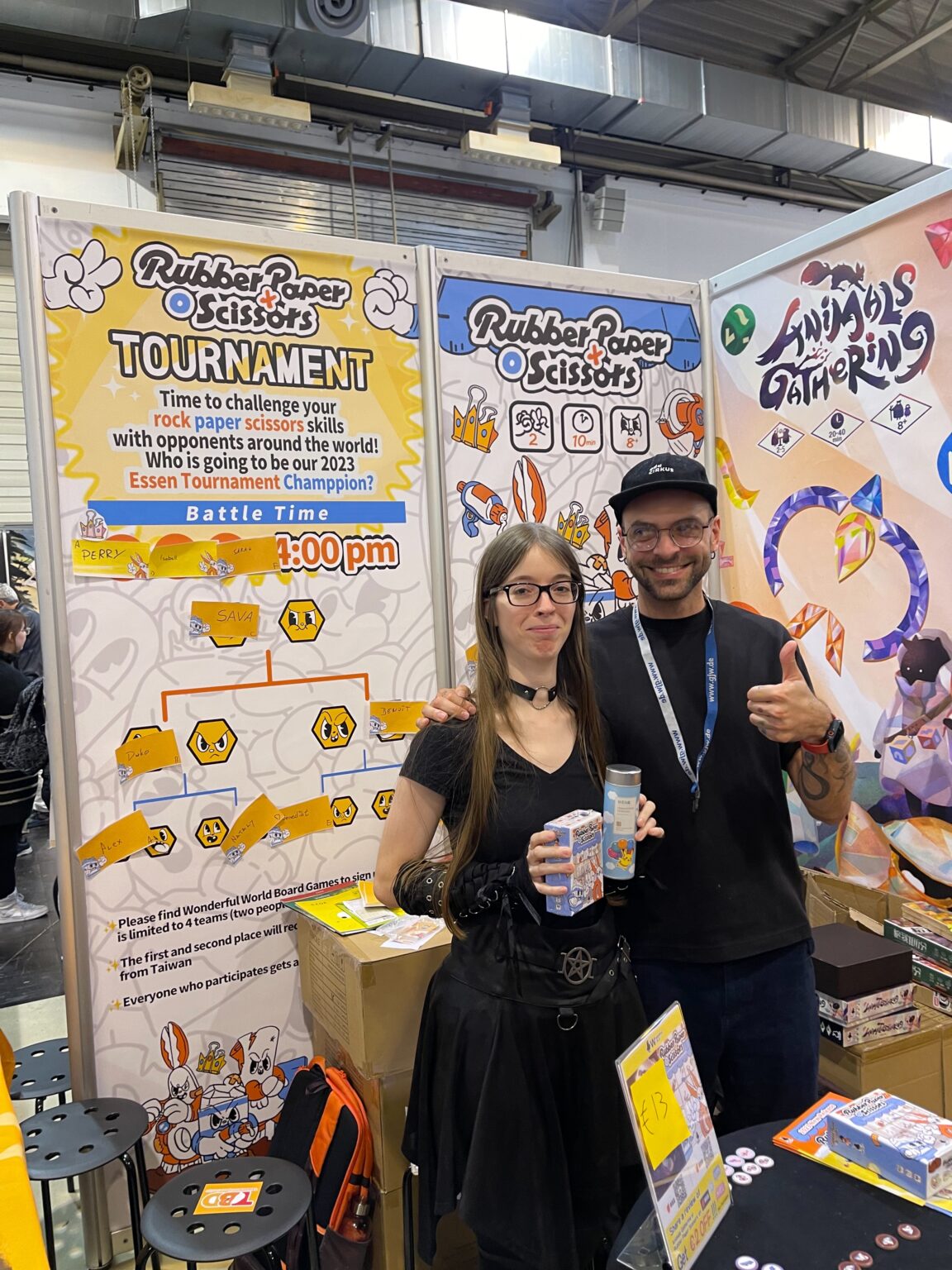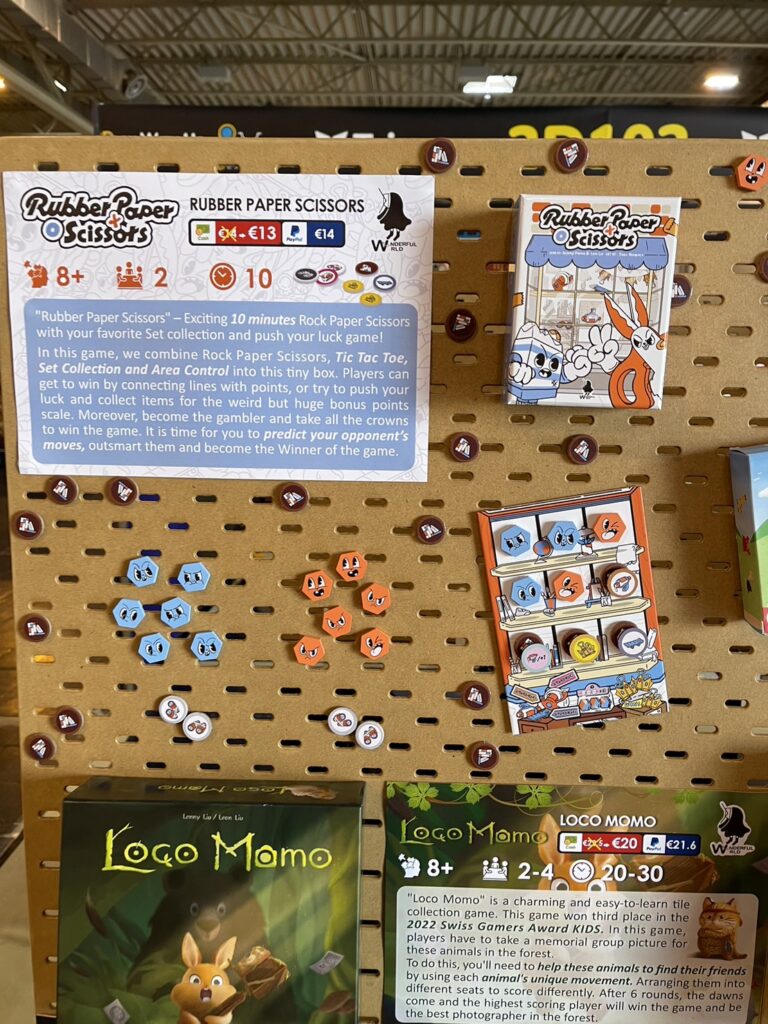Adding Fun and Strategy:
The Transformation of a Drinking Game
CONTENTS
Rubber Paper Scissors Designer Diary: The Transformation of a Drinking Game
The former name of Rubber Paper Scissors was “Bar Fight – The Spirits Battle.” It was a two-player game inspired by tic-tac-toe and rock-paper-scissors, but it had something very special. It was a drinking game where “eating” your opponent’s token resulted in forcing them to take a shot of alcohol. The game was abstract, and each player would draw a character’s card at the beginning to give them an ability.
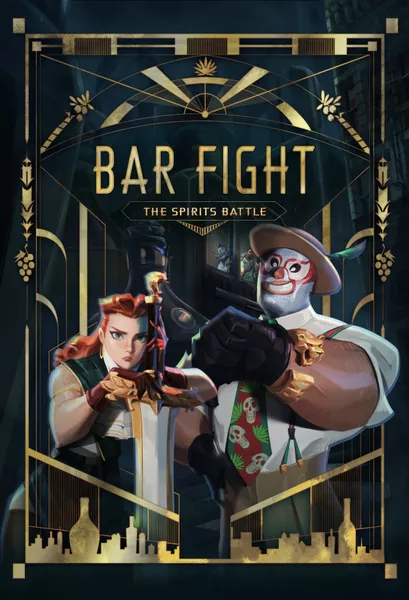
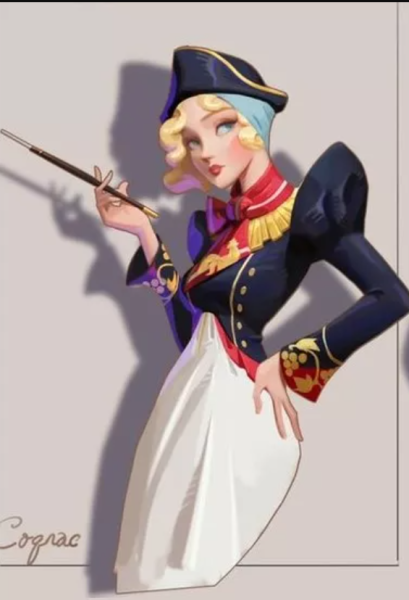
When Lenny asked me whether we could replace the shot glasses by meeples and hit the board game stores with the game, I thought it would be a good idea because I liked the fact that the game already combined rock paper scissors and tic tac toe mechanisms, although it did it in a very different way.
The first thing we did was to try and find another theme, something more fun, weird and that would let players know what they were doing. Thus, we naturally went for a rock paper scissors theme. Indeed, since my big token could eat the medium-size token, and the latter could eat the small token, it sounded logical that the big token would become a rock, the medium-size token a pair of scissors and the small one the paper.
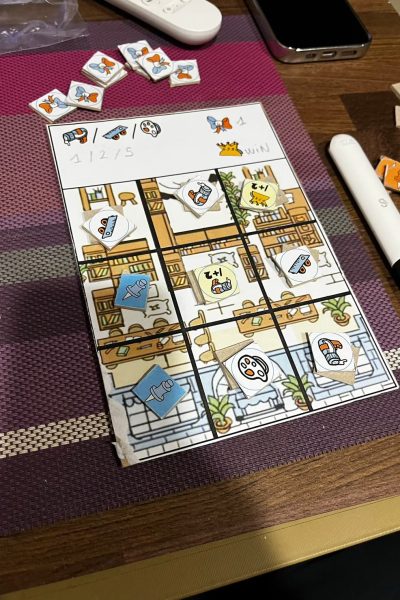
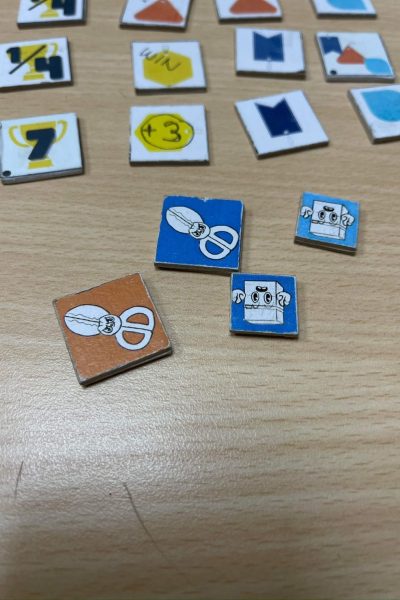
Then, I focused on something that bothered me a lot. The game was entirely abstract in the sense that all the information was visible at any time. From my experience, these games have a significant downside. The smartest or most capable players always win because they know and can anticipate every move. I am not sure if it’s a family-oriented feeling, but I know I am not the biggest fan of it. So, I decided that I needed some hidden information or an element of surprise. That’s why I introduced goal cards – secret cards that players draw at the beginning of the game.
Achieving these goals would grant players bonus points at the end of the game. They added a fun element to the gameplay, creating a feeling of “I think I know where you’re trying to make a line,” similar to some guessing games. Bluffing was introduced, intensifying the overall gaming experience.
Reimagining the Game Experience Beyond the 3x3 Grid
But I was still not satisfied. I felt that the act of moving pawns onto a 3×3 grid had a somewhat dated touch that I didn’t really enjoy. I envisioned a small box and a highly dynamic game. When people talked to me about rock-paper-scissors, I saw energy, I saw fun, I saw shouting and screaming, I saw mind games.
Then, one day, it happened. We transitioned from moving tokens on the grid to engaging in rock-paper-scissors duels. The first time we did it was purely experimental: “I know it’s stupid, but let’s try it once anyway.” And by the end of that game, we realized we had just experienced real, genuine fun. Lenny and I started to wonder if it was worth exploring further. I suppose Lenny was getting anxious because “exploring” probably meant delaying the release, haha.
The tic-tac-toe grid served as a natural timer, with its 9 spaces allowing for 9 rounds of rock-paper-scissors—perfect! Now, what were we fighting for? Spaces, okay. But what else? Set collection, of course! Lenny and I are both avid fans of set collection games, so I crafted a set of tokens representing labels from a stationery store.
At each of the 9 locations, players were to collect two tokens.Back then, our system was a bit quirky but also fun. The loser of a round would first choose a location, and then the winner would take two actions among taking token 1, taking token 2, claiming the location by placing a character’s token.
The loser would then take the remaining action. We loved it but soon realized that it wasn’t quite natural for players to start a turn with the loser making decisions. It also somewhat diminished the feeling of power from winning a round.That’s why we decided to change the system and opt for something more familiar to players.
Locations were predetermined, and the winner would be the first to choose an action in that location—a more family-oriented approach.Then, we introduced crowns and placed half of the tokens face down to add more surprise factors and encourage risk-taking.
Accumulating three crowns immediately secured victory, much like in District Noir or other similar games. This mechanism truly suits Rubber Paper Scissors. It’s incredibly fun to fall behind in set collections and channel all your energy into obtaining those three crowns.
Rubber Paper Scissors: Transforming Cover to Match Game Dynamics
The rest was fine tuning. How many points having a line will score, how many points are the collections worth? We really tried to forget about what other board games do, like that 1/3/6/10…, and come up with something that suited our board game. Of course, modules were added because we feel like players appreciate the gifts of being able to play again with some new components that they can add to the game.
As for the artwork, we struggled quite a lot. Indeed, our artist Coco was way ahead of us and had already designed a cover when I was still playing with the old version (the one with the moving tokens). As we decided to go for a party, family, duel style game, I really thought we had to change the cover and express that duel feeling as well as the set collection.
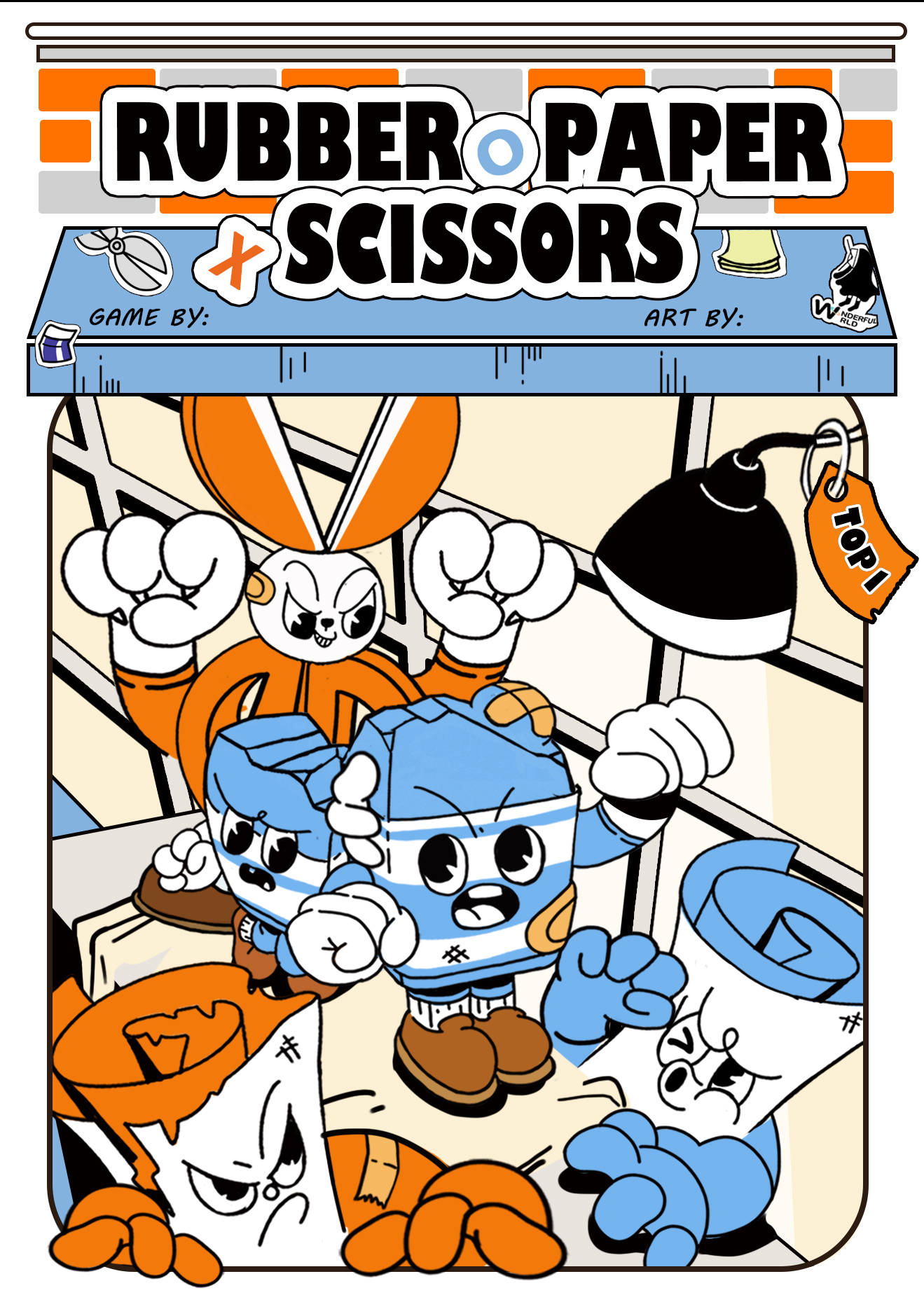
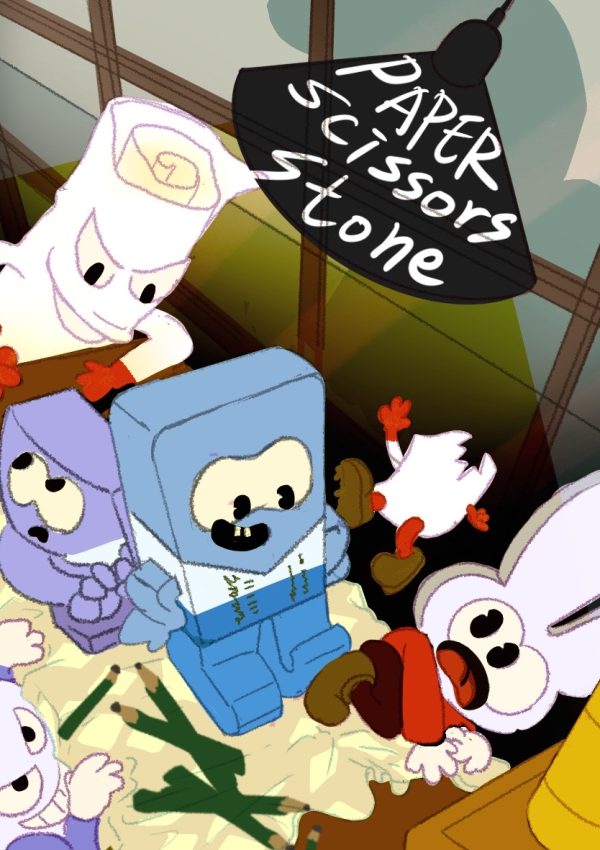
One last thing I noticed: there is a bias in people’s minds, and it could have hurt the game. When we introduced the game, players were kind of saying, “Well, rock-paper-scissors is a game of chance. There is no strategy to it.” I strongly disagree with that. My experience shows the exact opposite.
I am not saying rock-paper-scissors is like chess, but there is much more to it than just luck. I took some time to do my research, and I thought it would be a good idea to inform players about it. That’s why you’ll find some information in the rule book—a little bit of statistics and a little bit of how the interpretation of your opponent’s attitude impacts the way you will play a round of rubber paper scissors.
In the end, I am happy with the result. I wish I had a little more time because I wanted a double-sided board and some extra features. But anyway, the game looks weird and fresh, the feeling is nice, and kids also love it. So, I truly hope you enjoyed following me through this process. We tried to think smartly and create something that felt a bit different without losing our players’ habits. We are really pleased with it and hope you are too.
**This Designer Diary is provided by the author, Anthony. Please note that there is another game designer, Leon Liu, involved in the creation of this game.
Click here for more game information👉 https://www.wonderfulworldbg.com/rubber-paper-scissors/
Click here for BGG game information👉https://boardgamegeek.com/boardgame/394081/rubber-paper-scissors


 中文 (台灣)
中文 (台灣)